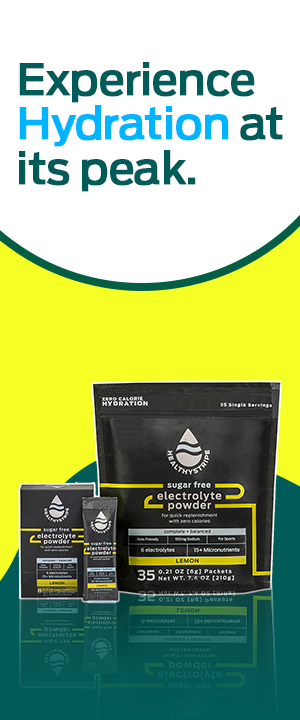Hypernatremia: Symptoms, Causes, And Treatments Of High Sodium Levels

The human body always remains in a state of homeostasis by maintaining the concentration of solutes and water in the blood. If this mechanism is impaired by any means, it can lead to an imbalance between this concentration leading to adverse outcomes. Hypernatremia (high sodium level in blood) is a similar condition in which either the excessive loss of water or less intake can lead to increased sodium levels. Hypernatremia has various effects on the body, with a mortality rate of 50-60%. High sodium levels in the blood for a longer duration are fatal. Statistics show that mild symptoms of hypernatremia have a mortality rate of 20% over 30 days.
In this blog, we will go into the depth of causes and symptoms of hypernatremia, identify its potential complications, and possible treatment options. By making ourselves acquainted with this medical condition, we will be able to determine its signs, seek timely medical assistance and take appropriate measures to prevent its occurrence further.
High Sodium Levels: What You Need to Know
Sodium is an essential nutrient responsible for carrying out vital functions of the body. It plays an important role in the contraction of muscle, generation of nerve impulses, and lymph formation. Our body regulates sodium levels by secreting Antidiuretic Hormone (ADH) from the pituitary gland, which increases water absorption from collecting tubules of the kidney, thus concentrating the urine. Moreover, our hypothalamus activates the thirst mechanism, increasing water uptake. Hypernatremia does not occur if these mechanisms are functioning properly. In most cases, hypernatremia is mild and does not need any treatment. But if severe, it can affect vital systems of our body, particularly the central nervous system.
What is hypernatremia?
Now that we are aware of the overview let’s begin with the medical definition of hypernatremia. It is a condition in which the serum sodium levels are greater than 145mEq/L ( mmol/L). Electrolyte balance is crucial for the vital functioning of our body. Sodium is an extracellular cation that helps in maintaining intravascular volume. When sodium levels are greater in the extracellular fluid (environment outside cells) than in intracellular fluid, it absorbs water from the cells leading to cell shrinkage. It can cause permanent cell damage or cell death.
Epidemiology
Hypernatremia is more common in infants and the old age population. Conditions like gastroenteritis can predispose infants to this condition because of over-dependence on the mothers for feeding purposes. Premature infants are more vulnerable to high sodium levels. Elders with any neurological impairment like dementia are also at higher risk because of defective thirst mechanisms and inadequate water intake. Intravenous administration of hypertonic saline drips can also lead to hypernatremia in hospitalized patients.
Pathophysiology
Hypernatremia occurs when there is excessive loss of water or too much sodium intake, or both. The net result is a small amount of water in the body compared to serum sodium levels.
Plasma osmolality depends on the concentration of sodium in the plasma. The normal value of plasma osmolality is between 275 mOsm/kg and 290 mOsm/kg. Plasma osmolality is regulated by the following two mechanisms:
- The concentration of urine by Antidiuretic hormone (ADH)
- Thirst
Urinary Concentration-ADH
Whenever plasma osmolality is increased above 280-290 mOsm/kg, it sends signals to the brain to start a counter mechanism that regulates plasma osmolality in normal ranges. The kidney plays an essential role in urinary concentration by increasing the absorption of water from renal collecting tubules in response to the ADH hormone.
When plasma osmolality reaches above 290 mOsm/kg, it means serum sodium levels are raised in extracellular fluid. It then absorbs water from cells causing cell shrinkage. In this process, the receptors present in the cell membrane are stretched, which sends signals to the hypothalamus and posterior pituitary gland to secrete Antidiuretic hormone (ADH).
ADH then travels from blood to the kidney, where it binds with the V2 receptor in renal collecting tubules (tubules in the kidneys). V2 is a G-protein coupled receptor. Upon activation, it originates a signal transduction cascade that phosphorylates aquaporin-2. Aquaporin-2 is then translocated in the renal tubules’ apical membrane, creating water channels in the tubules. In this way, water absorption increases, leading to urinary concentration and regulation of plasma osmolality.
Thirst
Certain osmoreceptors are present in the hypothalamus that regulates the thirst mechanism. The thirst mechanism is activated with the increase in plasma osmolality of 2-3%, which leads to an increase in water intake. This mechanism is so effective that if a person cannot concentrate their urine (which occurs in a pathological condition called Diabetes insipidus), hypernatremia cannot develop because of the thirst mechanism. Thus, hypernatremia cannot occur if this mechanism is intact.
Causes of Hypernatremia
Too much sodium levels can cause profound health issues. Understanding the various causes of hypernatremia can enable you to deal with it before the development of complications. In this section, we will discuss the details of conditions that can lead to high sodium levels in the blood.
- Insufficient Fluid Intake
It is one of the most common causes of hypernatremia. Insufficient fluid intake can result in dehydration and increases sodium levels in the body. It can happen in conditions such as impaired mobility, limited access to water sources, and diminished thirst sensation. Therefore, you should maintain a moderate amount of fluid to prevent dehydration and hypernatremia.
- Excessive Loss of Fluid
Excessive water loss can occur in conditions like diarrhea, excessive sweating, vomiting, and burns. In these cases, both sodium and water are lost, but water loss is more considerable, leading to a net increase in the body’s sodium content. It is necessary to replenish that loss to prevent serious complications.
- Excessive Sodium Intake
Excessive sodium intake from the diet can lead to hypernatremia especially when fluid intake is limited. Diets such as fast food, processed foods, and food preserved with salts are substantial sources. It is better to consume a balanced diet containing fresh fruits, vegetables, and whole grains to prevent sodium intoxication.
- Medications and Medical Disorders
Certain drugs can cause hypernatremia by increasing the loss of water from the kidneys. These drugs include diuretics, mannitol, sodium bicarbonate, chemotherapy, and radiotherapy. Hyperglycemia or high blood glucose levels (as in diabetic patients) can also lead to hypernatremia. Diabetes insipidus is a medical disorder in which an insufficient amount of Antidiuretic Hormone (ADH) is produced that compromises the kidney’s ability to concentrate urine. Ultimately a large amount of diluted urine is produced, resulting in dehydration. This way, an impaired thirst mechanism can also cause hypernatremia. Neurological disorders like dementia and Alzheimer’s can cause impaired cognitive ability and reduce thirst sensation, increasing the risk of developing hypernatremia.
- Old Age and Infancy
Elderly people are predisposed to hypernatremia due to impaired thirst mechanisms, inability to maintain fluid balance, and kidney disorders. Infants depend on their caretakers for the availability of water, and any lack in the fulfillment of this need can increase the risk of hypernatremia.
- Gastrointestinal disorders
GIT disorders such as severe diarrhea, vomiting, gut obstruction, inflammatory bowel disease (IBD), and malabsorption can lead to hypernatremia.
Kidney dysfunction
Kidneys play an essential role in conserving water by increasing its absorption from nephrons. Any damage to these structures can compromise its ability to concentrate urine. Thus, large amounts of water will be lost in urine rendering high sodium levels in the body.
Hot Weather Conditions
Hot weather conditions can increase the loss of water from excessive sweating. You should consume plenty of fluids to reduce the risk of dehydration and hypernatremia.
Symptoms and signs Hypernatremia
One of the most common manifestations of hypernatremia is thirst. In case of impaired thirst mechanism, patients will be unable to express thirst. It can also happen in elderly patients with neurological impairment. Hypernatremia can cause severe damage to the central nervous system. Sodium levels greater than 155 mmol/L are crucial for developing major signs and symptoms of central nervous system damage. While serum sodium levels greater than 180 mmol/L can prove fatal. The following signs and symptoms may appear due to CNS dysfunction:
- Confusion
- Dizziness
- Neuromuscular excitability
- Hyperreflexia (increased reflexes)
- Restlessness
- Irritability
- Lethargy
- Seizures
- Coma
- Cerebrovascular damage
- Subarachnoid hemorrhage
- Venous thrombosis
In chronic cases, symptoms of hypernatremia may be less severe due to the production of osmotically active substances that increase intracellular osmolality. As a result, brain cells are less dehydrated.
Risk Factors Of Hypernatremia
The age group which is more vulnerable to hypernatremia are infants and elders who present most commonly with some febrile illness. In hospitalized patients, hypernatremia emerges due to certain medical ailments. Acute and chronic hypernatremia are treated differently. Therefore it is vital to recognize it early. The following are the risk factors of hypernatremia:
- Infancy
- Old age
- Uncontrolled diabetes
- Neurological impairment
- Physical impairment
- Diuretic therapy
- Hospitalized patients
- Inappropriate nursing care
- Kidney dysfunction
Diagnosis Of Hypernatremia
Whenever you encounter the above signs and symptoms, you should seek your doctor’s help. Your doctor will thoroughly examine you to determine the root cause and initiate appropriate treatment. It involves certain evaluation steps for hypernatremia diagnosis, which are mentioned below:
- History: Your doctor will ask certain questions to ascertain the signs and symptoms and check the fluid consumption.
- Physical Examination: In this step, the doctor will check vital signs, fluid status, and neurological signs.
- Blood tests: These involve checking serum electrolyte levels, kidney function tests (RFTs), and complete urine examinations.
Treatment of Hypernatremia
Hypernatremia treatment essentially focuses on the correction of serum sodium levels and restoring the hydration status of the body. The treatment approach depends upon the severity of the disorder and the underlying cause. Apart from some general measures, the cause of the disease should also be appropriately managed. Interventions are as follows:
- Lifestyle Modifications
It is critical to adopt a healthy lifestyle to prevent hypernatremia. It involves consuming an adequate amount of water, minimizing the diet containing too much sodium, and avoiding hot weather conditions. Whenever you feel dehydrated or experience symptoms like confusion, dry mouth, lethargy, or muscle weakness, seek your doctor’s advice.
- IV Fluid Administration
Unconscious patients and those having severe signs and symptoms like confusion, muscle weakness, lethargy, and coma are treated with Intravenous fluid therapy. Fluid replacement should be done at a slow rate to minimize the complication of developing cerebral edema.
Acute hypernatremia that has developed within 24 hours should be treated within the next 24 hours. In the case of chronic hypernatremia, serum sodium levels should be corrected within the next 48 hours. Plasma osmolality should be decreased at the rate of no more than 0.5 mmol/L/Hr. In the case of hypernatremia, the fluid of choice is:
- Hypovolemic hypernatremia– 0.9% normal saline or 5% dextrose water
- Euvolemic hypernatremia–5% dextrose water or 0.45% normal saline
- Hypervolemic hypernatremia– 5% dextrose water.
- Strict Monitoring of Serum Electrolytes
Daily monitoring of serum electrolytes, with special reference to serum sodium levels, should be given keen importance to ensure the efficacy of treatment and to prevent the development of complications.
- Treatment of Underlying Cause
If you are taking general measures but not treating the root cause of hypernatremia, all your efforts will be wasted. Addressing the root cause of hypernatremia is essential for long-term management. It may involve the following regimes:
- Give proper nursing care to old and debilitated patients. Feeding tubes should be used in unconscious patients.
- Stop using certain medications that are causing more problems rather than fixing the disease.
- Patients with diabetes insipidus should be given proper treatment options. Desmopressin is a synthetic hormone that can replace ADH in our body.
Conclusion
In the essence of the above discussion, maintaining a harmonious balance of electrolytes is critical for the optimal functioning of the body. Hypernatremia is a metabolic and electrolyte disorder having the potential to produce severe complications inside the body. Understanding its causes and risk factors can enable us to take essential measures to prevent hypernatremia signs and symptoms. Proper fluid therapy should be given to the vulnerable population by all means to minimize the risk of developing hypernatremia. Moreover, always consult healthcare professionals and doctors to take necessary measures to rectify electrolyte imbalance. The treatment prescribed by the doctor should be followed completely for hypernatremia correction.
On the whole, stay fully hydrated, understand the cues of your body, and seek timely help from healthcare professionals to prevent sodium intoxication.
What is the first symptom of hypernatremia?
What are the complications of hypernatremia?
Early complications of high sodium levels in the blood are dizziness, irritability, seizures, and coma. Most of them are caused by the shrinkage of cells leading to cell damage or death. The central nervous system is most commonly affected. Hypernatremia can cause
subdural hemorrhage, venous thrombosis due to venous congestion, subcortical hemorrhage, cerebral infarction, seizures, brain edema (from rapid correction of hypernatremia), and increased mortality rate (from serum sodium levels above 180 mmol/L) in severe conditions.
What is a dangerously high sodium level?
Normal levels of serum sodium range from 135 mmol/L to 145 mmol/L. Too much Sodium level of more than 145 mmol/L is referred to as hypernatremia. The severity of signs and symptoms occurs when sodium levels reach above 160 mmol/L. At the same time, sodium levels greater than 180 mmol/L or 190 mmol/L can increase the mortality rate in many individuals.
How long does it take to recover from hypernatremia?
In the case of acute hypernatremia, which presents within 24 hours duration, serum sodium levels can be corrected in the next 24 hours, provided that the required treatment has been started. In the case of chronic hypernatremia, sodium levels should be corrected within 48 hours duration. Overall, it is critical to avoid rapid correction of sodium levels to prevent brain edema.
Which drug causes hypernatremia?
Hypernatremia can be caused by treatment with several medications. These drugs include diuretics, sodium bicarbonate infusion, corticosteroids, mannitol infusion, androgen, and estrogen. The mechanism behind high sodium levels in the body after taking medications is increased free water loss.









